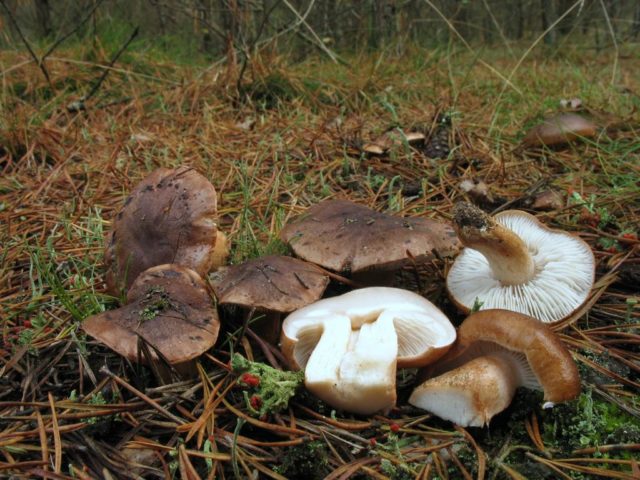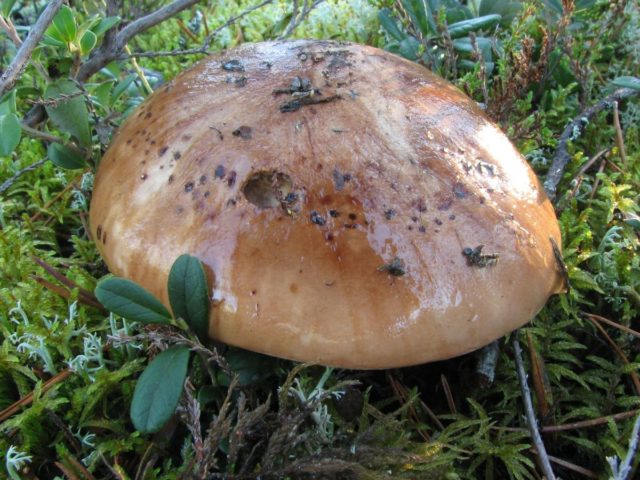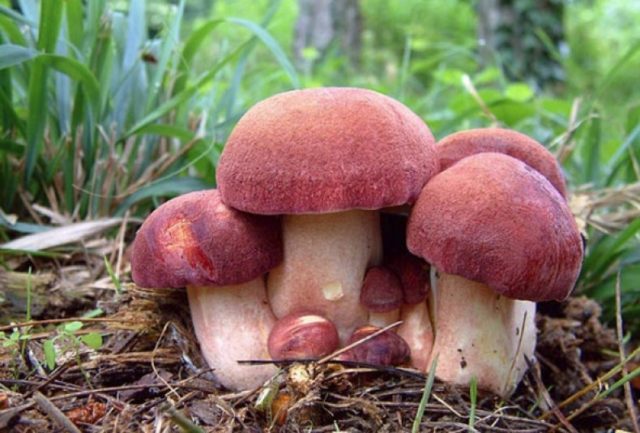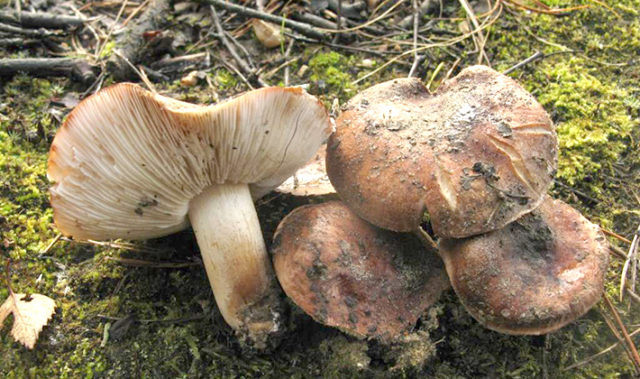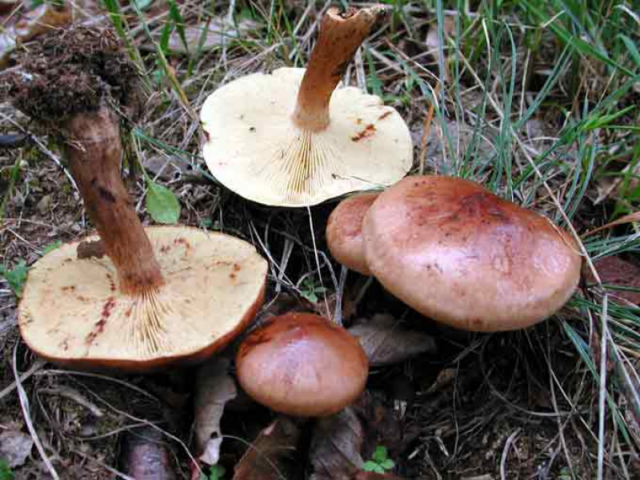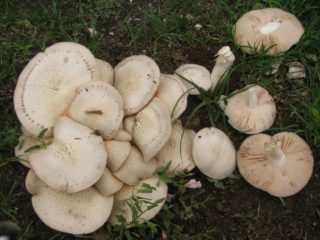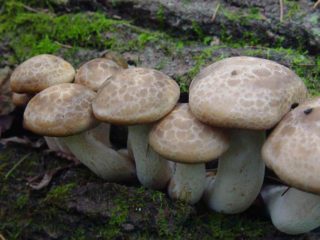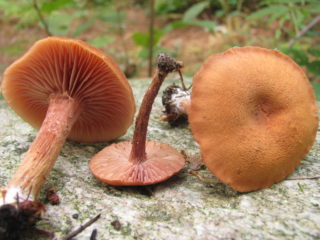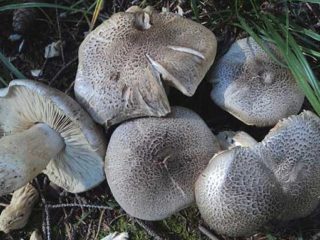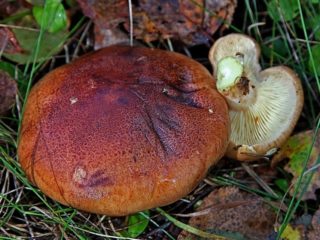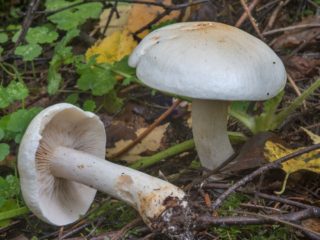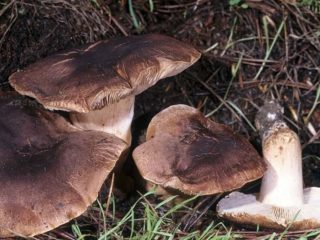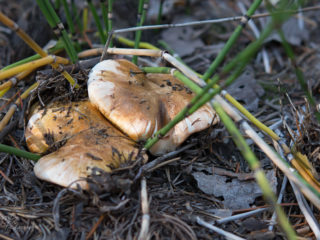Content
A slightly poisonous mushroom from the genus Tricholomov (Ryadkov) - spotted row. Latin name: Tricholoma pessundatum. In the literature you can find other names for the fungus: speckled row, ruined, wavy-pedunculated. In Poland and Germany, the species is included in the Red Book as rare and endangered.
Where do spotted rows grow?
In Russia, the destroyed row is widespread everywhere. The fungus selects acidic soil in the middle of coniferous or mixed forests, forming a mushroom root with fir, spruce or pine. Happens quite often.Fruiting begins with the arrival of autumn and lasts until the onset of the first frost. In the southern regions of the country, the spotted representative of the Tricholomov genus can be found in December. The species is distributed throughout Europe and North America.
What do spotted rows look like?
This is a rather large mushroom, the diameter of its cap can reach up to 15 cm. It is fleshy, convex, and over time can become prostrate, with a small depression in the center. The color of the cap is light brown, with a reddish or yellow tint; small rusty spots can be observed throughout the surface. Its uneven, folded edge is always less colored than the middle. After rains, the spotted surface, covered with mucus, becomes glossy.
The reverse side of the cap of young mushrooms is covered with dense white plates. In old, overripe fruiting bodies they become spotted, reddish or brown.
The leg is short, up to 5 cm in height, thick, widened towards the bottom, cylindrical, hollow inside, fibrous, diameter ranges from 1.5 to 3 cm. Its color is light, beige or white, in the upper part it is almost discolored. When pressed, the surface of the leg turns brown.
The off-white flesh has a faint powdery, unpleasant odor. The taste is vague, slightly bitter.
The spores are colorless, oval, smooth. Their powder is white.
Is it possible to eat spotted rows?
Despite the low content of toxins in the pulp, the spotted row is classified as an inedible poisonous species. If it enters the food tract, the fungus causes acute poisoning.
How to distinguish spotted rows
All representatives of the genus are, in one way or another, similar to each other. The speckled row is distinguished from its species counterparts by characteristic spots on the cap.
The edible mushroom is the poplar row, similar to the spotted one. The first species is not found in coniferous forests, unlike its poisonous twin, but grows under poplars and aspens. Poplar has a smooth, glossy, fleshy cap with a smooth edge. Its color is dark, with a hint of red, almost burgundy. The leg is thick, strong and coffee-colored.
The poplar row bears fruit earlier than the spotted one - from August to early October. The edible mushroom grows in large families in spacious, well-lit clearings in deciduous forests.
The white-brown row is a conditionally edible representative of the species, which is distinguished by a fleshy convex cap, without characteristic markings. The color of the cap is dark or light brown, the surface is matte.
The stem and dense flesh of the mushroom are pure white, under the skin it is reddish, and immediately darkens when pressed. There is no characteristic mushroom smell or taste.
The mushroom also grows in coniferous forests, less often in mixed forests. The main feature: the double, growing in large groups, forms orderly rows along forest clearings.
The red-brown row is a conditionally edible mushroom, which differs from the poisonous one only in its wider spores. The shape and location of growth are identical. The red-brown row has a more rounded cap, which is colored dark brown.
Symptoms of poisoning
The mushroom does not contain high concentrations of toxins, but when eaten it causes nausea and vomiting. Within an hour after eating spotted row, inflammation of the stomach or intestines begins. The process is accompanied by severe pain in the epigastric region, diarrhea, dry mouth, and increased sweating.
The mushroom is especially dangerous for people suffering from diseases of the gastrointestinal tract, for children and the elderly.
First aid for poisoning
If intoxication is suspected, immediately call a doctor to your home. Then they drink any available sorbent, for example, activated carbon, and observe bed rest. Before the doctor arrives, you need to drink as much fluid as possible to remove toxins from the body naturally. Timely, qualified medical care guarantees an improvement in your condition within 24 hours.
Conclusion
Spotted row is a strong, beautiful mushroom that should not be put in a box when you are in the forest in the fall. Despite its attractive appearance, this spotted representative of the Ryadkov genus is poisonous, causing gastrointestinal disorders and poisoning. The mushroom has several edible counterparts, which are not easy to distinguish from their toxic counterpart.
